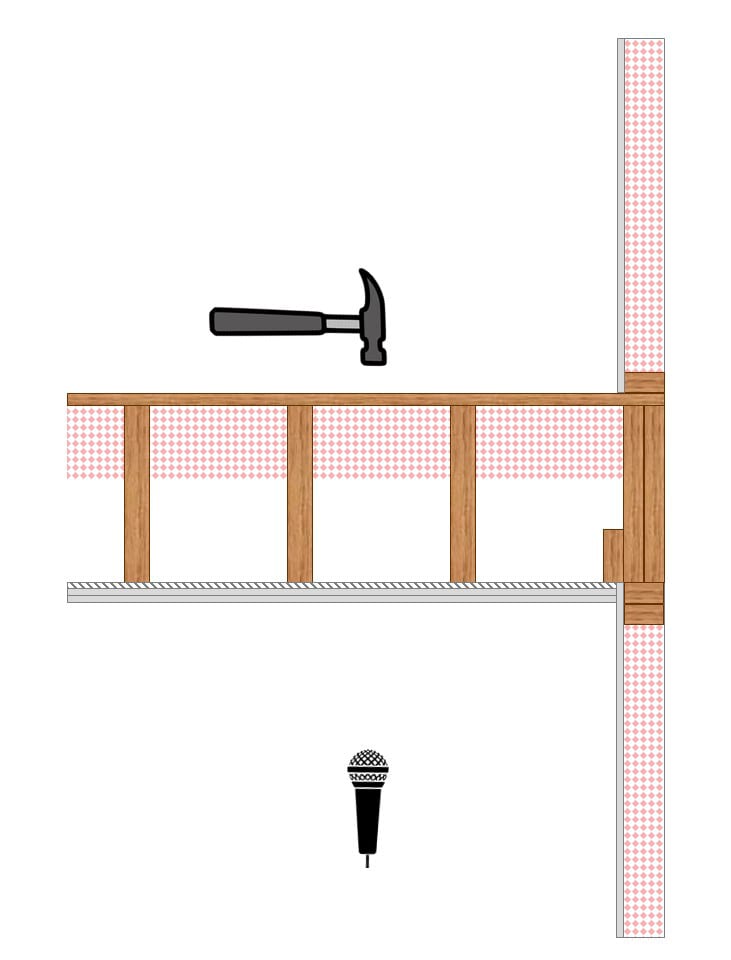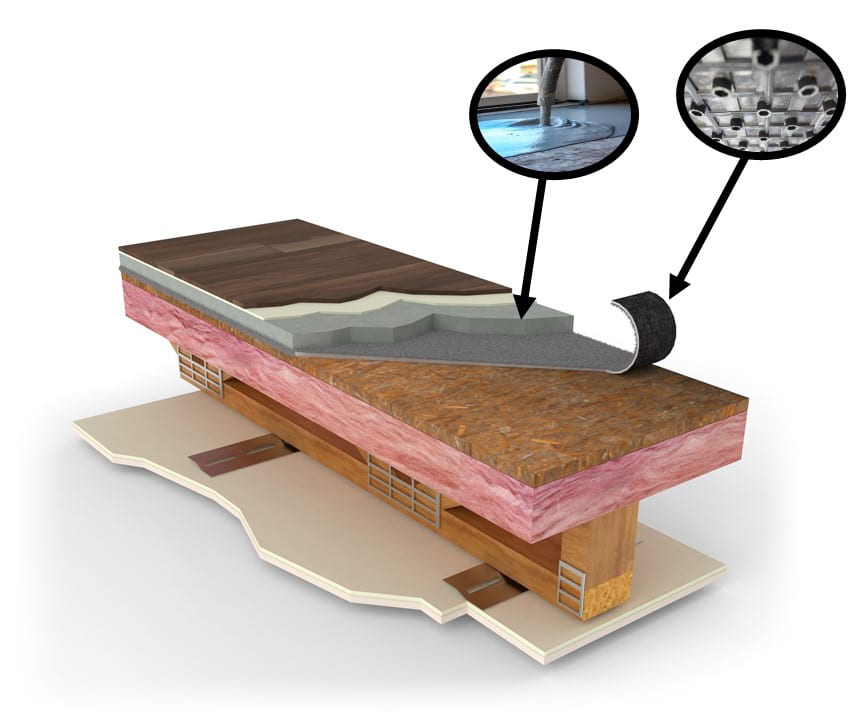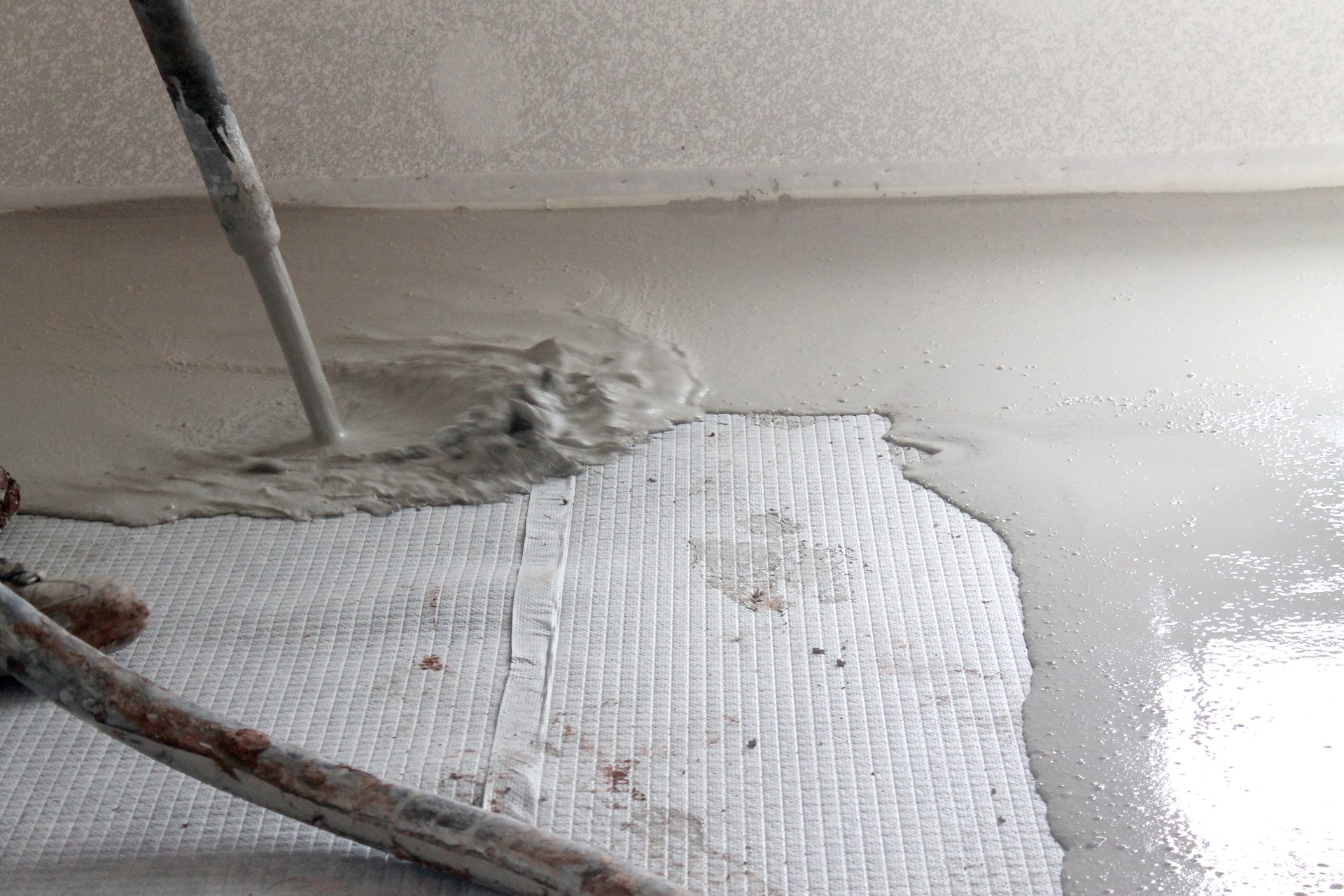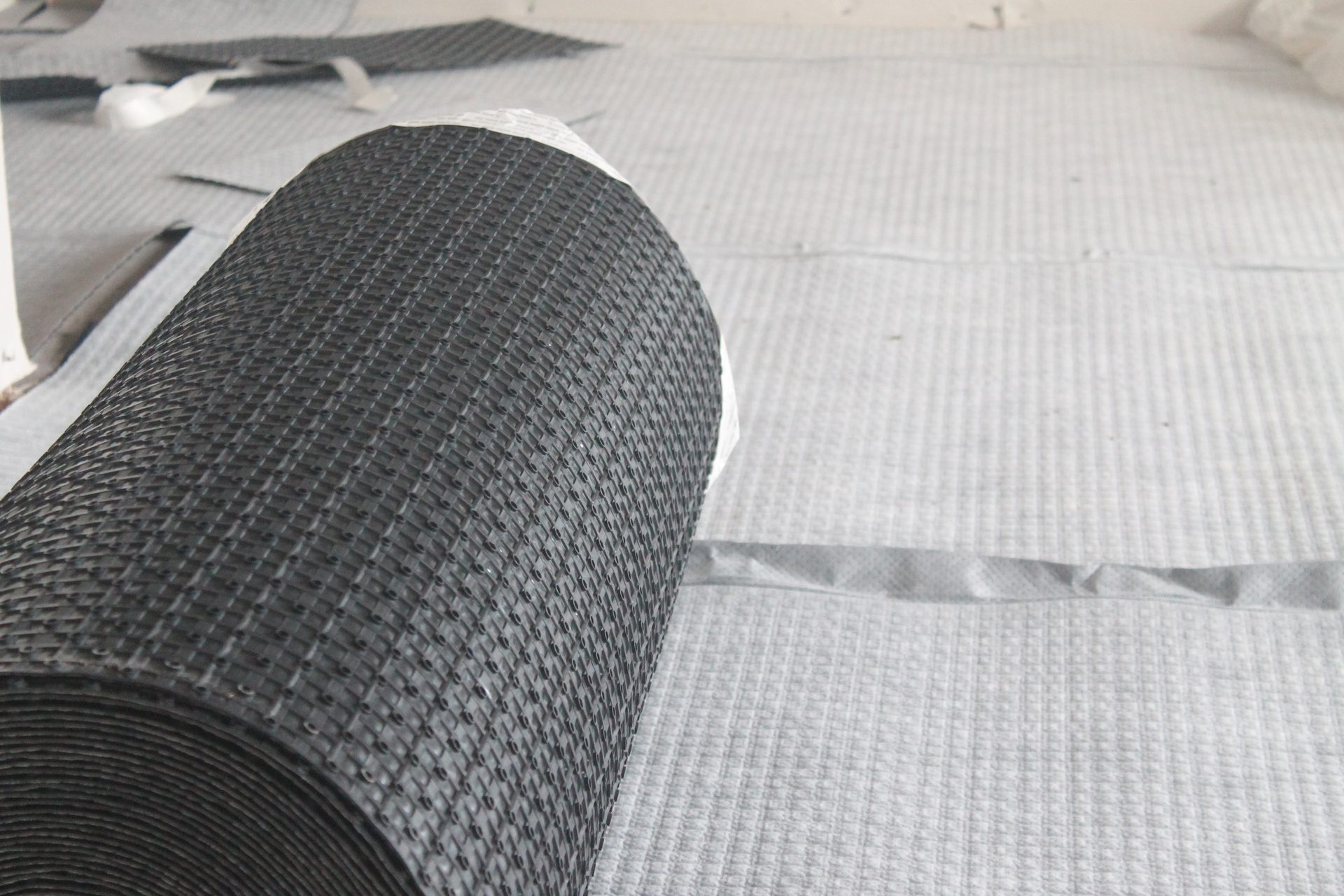New Advances in Blocking
Floor-to-Floor Noise
Gypsum has become a preferred floor underlayment in part because it does double-duty, both providing a non-combustible layer to slow fire-spread from floor to floor and damping noise transmission. By Steven H. Miller
Waiting for the other shoe to drop has been a common human experience since the invention of the two-story house. The disruptive thump heard in the room below is called impact noise, and over the centuries, floor-to-floor transmission of impact noise has proven difficult to tame. In applications such as multi-family housing, it is a significant issue. Numerous solutions have been developed to control both impact sounds (such as footfalls), as well as airborne sounds (such as speech or music). These solutions are complete floor/ceiling assemblies that have been tested and rated for noise isolation. They are standards, registered with UL Laboratories, and must be constructed exactly as the assembly was tested.
The floor/ceiling assembly also plays an important role in fire prevention. Gypsum has become a preferred floor underlayment in part because it does double-duty, both providing a non-combustible layer to slow fire-spread from floor to floor and damping noise transmission. Gypsum has proven an effective noise reducer, especially when poured on top of an acoustic mat that further decouples the floor from the subfloor, and numerous registered floor/ceiling assemblies using gypsum over acoustic mat are available.
However, the most commonly-used type of acoustic mat, entangled mesh, has a detrimental effect on the durability of the floor, encouraging underlayment deterioration and premature flooring failures. A newer system is available that resolves this inherent flaw.
Ratings
Two standard ratings are used for noise-isolating floor/ceiling assemblies: The Sound Transmission Class for airborne noise (ASTM E90 Standard Test Method for Laboratory Measurement of Airborne Sound Transmission Loss of Building Partitions and Elements) is used for both walls and floor/ceilings. The Impact Isolation Class (IIC) for impact noise (ASTM E492 Standard Test Method for Laboratory Measurement of Impact Sound Transmission Through Floor/ceiling Assemblies Using the Tapping Machine) is only for floor/ceilings. Acoustic performance is measured using a sample floor/ceiling assembly installed between the levels of a special two-story test chamber. Noise is generated in the upper room, and transmitted noise is measured in the lower room.

Setup for testing IIC ratings of floor/ceiling assemblies. The tapping machine hammers on the floor above, creating impact noise, and a microphone records the sound transmitted through the ceiling on the floor below.
In August 2021, ATSM published a new standard for rating low-frequency impact noise, ASTM E3207 - 21 Standard Classification for Determination of Low-Frequency Impact Noise Ratings. It creates a new LIIC rating for low-frequency isolation measured in a testing laboratory, and an LIR rating for field measurement in existing buildings. It uses data from the same test methods as IIC and ISR ratings, but it requires measurement in low frequencies (50 Hz, 63 Hz, and 80Hz bands), which have not been measured in those tests.
Since the standard is so recent, and these bands were not included in previous tests, floor/ceiling assemblies have not been reliably rated for their LIIC yet. The standard has not yet been adopted into code. Therefore, it is too early to say what consequence ASTM E3207 will have on floor/ceiling assemblies.
Noise Solutions
Many building codes for multi-family housing require floor/ceiling minimum ratings of 50 for both STC and IIC. To achieve these levels of isolation, multi-layered floor/ceiling systems have been developed. Many follow the same general pattern of layers, listed here from the floor downwards.

Wood truss floor/ceiling assembly using AccuQuiet system that features an ultra-low-contact acoustic mat and matched gypsum underlayment
Floor Covering: Floor coverings are the system’s point of first contact with the sound source, and have a significant effect on sound transmission. Carpet generally has the best damping effect. Hard floor coverings transmit much more sound, especially impact noise, and require more attenuation beneath the floor.
Underlayment: Directly beneath the floor covering is often a gypsum or gypsum-composite slab of 3/4 inch or greater thickness. It provides a smooth and level subfloor, isolates airborne sound, and adds mass (weight) to the floor system, which helps limit sound transmission, especially in low frequencies.
Acoustic Mat: Gypsum underlayment is site-mixed and poured in place over a mat that acoustically decouples the flooring above it from the structural support beneath it, to some degree, minimizing the amount of transmitted vibration. The acoustic mat is, in essence, a spring. It compresses under impact and transforms the kinetic energy (sound-induced vibration) into minute amounts of heat energy.

Accucrete gypsum underlayment is poured onto an Accuquiet acoustic mat. The gypsum hardens into a thin, rigid layer that floats on top of the acoustic mat.
Structural Floor: The structural floor is the thickest element of the floor/ceiling assembly. Truss and joist floors have significant cavities between the joists that can become echo-chambers. They may be filled with sound absorbing materials – acoustic batts or blankets, for example – to stop airborne noise transmission.
Ceiling Fastening: To acoustically decouple the structural floor from the ceiling, drywall ceilings are attached to resilient channel. These sheet metal fastening strips have two flanges, and creases between the flanges that make the channel act as a spring, minimizing transfer of structural vibrations.
Ceiling: The ceiling drywall is the final stage of floor-to-floor noise control. Floating under the resilient channel, it is another layer of mass that helps deaden sound, which can be enhanced by double layering.
Over time, the standards have increased, and the floor/ceiling assemblies have been fine-tuned for higher and higher performance.
The Durability Problem
During the past 4 decades, the most commonly used acoustic mat has been entangled mesh of nylon or polypropylene. The curliness of the strands makes the mat act as a spring when compressed. The thicker the mat, the more impact sound it can absorb. Thicknesses of 1/8, 1/4 and 3/8 inch are common.

Entangled mesh acoustic mat damps vibration by compressing the curly strands of plastic.
The compressibility of the mat also creates a durability problem. The gypsum slab is supported by the mat, and if the mat compresses beneath a point load, the floor can deflect, causing the underlayment to crack. Subsequent loading grinds that weak spot, widening the crack. It may get longer, too, encouraging other nearby areas to crack as well.
Progressive cracking gradually wears out the underlayment. It can lead to loose or cracking tiles, and loose or splitting wood flooring. It may make the floor much noisier, too. The underlayment can become so deteriorated that the floor needs to be replaced far sooner than the normal life expectancy of the floor covering, effectively increasing the cost of the floor several times over the life of the building.
The Next Evolution: Less Deflection, More Isolation
The weakness can be minimized by using a sound control underlayment system designed to limit deflection. The system consists of gypsum-based underlayment paired with a new type of acoustic mat that requires less compression to achieve similar levels of damping.
The mat is unlike entangled mesh. The top surface includes a semi-rigid structural grid, supported underneath by small, discreet contact pillars, each approximately 1/4 inch diameter. All load-transfer goes through these pillars, and the mat has contact with only 5 percent of the subfloor surface area, ultra-low contact. Most of the compression occurs in these pillars, which make the mat, in essence, a stronger spring than entangled mesh. It compresses less under a given load and requires less compression to absorb a given amount of sound energy. The mat dissipates vibration as well or better than entangled mesh of similar thickness, but the gypsum underlayment deflects less and cracks little if at all.

The acoustic mat does not have a compressible mesh. Its ultra-low contact bottom surface undergoes less compression, and blocks vibration transmission as well or better, than entangled mesh mats.
The resulting floors exceed many existing codes for noise control and have a longer potential service life. As codes trend towards higher acoustic ratings, this more efficient noise-isolation system may prove a valuable tool in meeting requirements cost-effectively.

The almost-completed floor/ceiling assembly, seen from above, ready to receive the floor covering. The gypsum underlayment seals any air-leaks at the edges that would allow acoustic “flanking.” The acoustic mat beneath it de-couples the underlayment from the subfloor, minimizing vibration transmission. The acoustic bats in the structural floor absorb some noise that pushes through, and the resilient channel attached to the bottom of the structural floor acoustically decouples the ceiling from the floor above.
All photos courtesy of AccuCrete.com
Steven H. Miller is a journalist, specializing in the construction industry for the past 14 years, and a freelance marketing writer for building products manufacturers. He is based in California and can be reached at steve@metaphorce.com.
